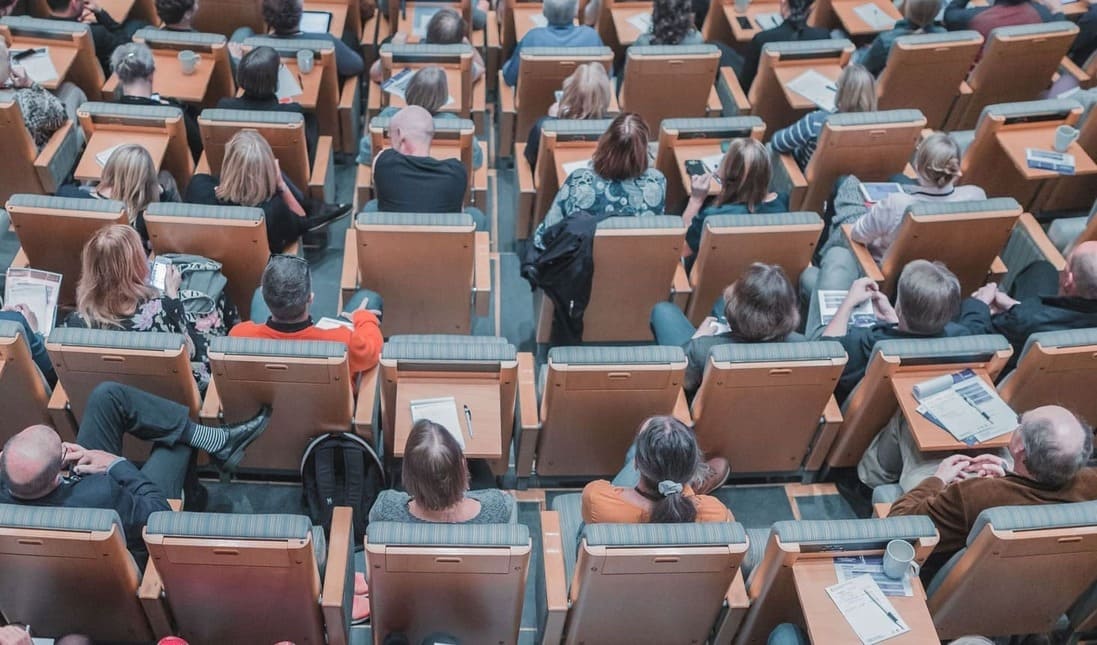Although participating in a trade show requires a great deal of rigour and organisational skills, it’s also a good idea that can yield results for your business.
Summary
Regardless of the sector, companies participating in a trade show take advantage of this moment to create contacts, advertise, sell their products and promote their brand. There are trade shows for everything: cars, weddings, food, books, animals, technology, and much more. When organising a trade show, there are several factors to consider, including the choice of location, date, theme, and sponsors among others.
Here are some tips for organising a successful trade show:
1. Choosing the ideal location
The location where you want your trade show to take place is one of the most important factors to consider when planning it. It is essential for its success. The chosen location reflects your company’s personality and can play an important role in the attendance of visitors and exhibitors to your trade show.
It must be a functional, easily accessible and well-communicated place. It should also have appropriate infrastructure for your trade show. Some aspects to consider:
- Capacity: This is a crucial element, but you won’t know the exact number of visitors and exhibitors from the beginning. Analyse the market and interest in your trade show and launch the sale of spaces for exhibitors first. The number of visitors will also have to be estimated based on your market analysis. From the second year of your trade show, your estimates will be more accurate and you will be able to move to a bigger or smaller venue if necessary.
- Location: It is also an important element as it should have services nearby, such as restaurants, accommodation, etc. and be easily accessible.
- Available services: Finally, ask yourself if the venue offers the necessary infrastructure and logistics, such as furnished meeting rooms and sufficient internet connection.
2. Create a marketing strategy
You must choose the appropriate marketing and organisation strategies to promote your trade show. Establish your target audience by examining the profiles of the exhibitor companies and the public, the goods and services exhibited at the trade show, etc. You must also specify the commercial and marketing goals you want to achieve and the gains you expect, the measures you will take to achieve these goals and anything that could prevent you from reaching them.
Regarding your marketing strategy, you also need to make decisions regarding the accessibility of attendees and exhibitors to your trade show. Your promotions have to encourage future attendees to register for your event simply and intuitively, being able to access their tickets easily. To do this, use various strategies and channels, such as telephone prospecting for potential exhibitors, email communication, advertisements and social media, always keeping in mind your target audience.
3. Identifying potential sponsors
The sponsoring subject goes hand in hand with establishing a rigorous and detailed budget. Professional events such as trade shows depend on sponsors for promotion and success. Therefore, it is crucial to find several sponsors for their correct development. The sponsor must know the sector well and be considered a reference by the attendees and exhibitors of the trade show.
It can be interesting to create a commercial contract in which your sponsor agrees to provide you with a database of potential customers, visibility on their social media profiles, etc., in exchange for exposure since the sponsor will also have a presence in your trade show, during the whole event, in the form of stands, advertising, drinks, stickers, live videos, etc.
4. Preparing the decoration
Trade show attendees will pay attention, after the location, to the decoration and furniture chosen.
This applies to the trade show in general and the stands of each exhibitor. Therefore, they must reflect the personality of your trade show, the company of each exhibitor (they will have to personalise the decoration of their stand) and the theme of the trade show. This includes pleasant furniture, good lighting, cleanliness, state-of-the-art technology, internet connection, and your company’s logo being visible. Anything that can increase the attractiveness of your stands for the five senses will help!
5. Thinking about food, drinks and complementary services
Who wouldn’t want to eat and drink well at a trade show? It is necessary to plan and include good food at the trade show. It will give an additional good impression, add a touch of professionalism, and allow you to achieve your goals for the trade show even more effectively.
Although choosing to include catering services can generate additional expenses, it is still a good idea. You must take into account the following elements:
- The type of cuisine offered at the trade show will partly depend on the target audience, their goals and the venue. Make sure there are options for all tastes: it’s the best, as everyone will be satisfied.
- The setting: A buffet, whether seated or organised like a cocktail, can be the ideal option as it gives participants more freedom to move around the space, talk to other guests, etc.
6. Analysing the results after the trade show
Did you think everything’s finished once the trade show’s doors close? Not yet! One of the most important steps in organising a trade show is still left: evaluating the results. It allows for understanding the impact (positive or negative) that the trade show had and taking it into account for future editions; maintaining or modifying some characteristics.
Once the trade show is over, it is necessary to carry out two different types of analysis. If you attended the trade show as an exhibitor, the quantitative analysis should be based on the total number of contacts made, orders received, etc. If you are the organiser of the trade show, you must focus on the number of exhibitors and visitors that have attended. On the other hand, the qualitative analysis includes the improvements, strengths and comments of the visitors and exhibitors.
Organise your trade show easily, quickly and effectively with Weezevent!



